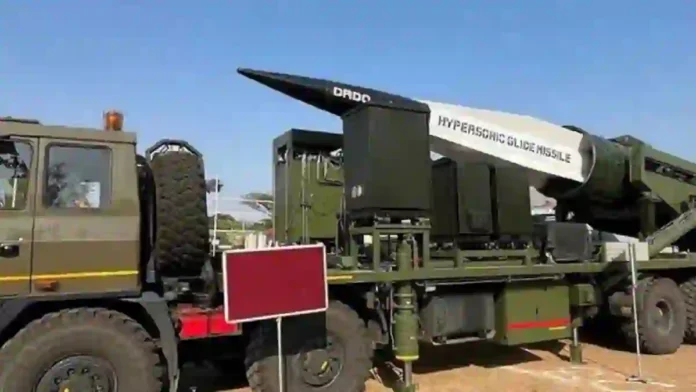India’s Armed Forces have embarked on a significant modernisation plan targeting a strategic expansion of hypersonic missile capabilities, with an ambitious target of building an arsenal of approximately 500 hypersonic missiles post-2030 to address the dual threat posed by China and Pakistan. This comprehensive tri-service initiative involves the Indian Army, Navy, and Air Force, aiming to establish decisive deep-strike capabilities capable of penetrating heavily fortified and sophisticated enemy air defences.
The spearheading entity for this advanced weapon program is the Defence Research and Development Organisation (DRDO), which is executing the development under a classified program reportedly codenamed Project Vishnu.
Read- India Is Upcoming Superpower With A Lot of Talent, Says DG Israel Ministry of Foreign Affairs
Hypersonic missiles under this program are designed to achieve speeds exceeding Mach 5 (five times the speed of sound), with current tests and prototypes demonstrating flight capabilities near Mach 8 to Mach 10. Unlike conventional ballistic missiles, these hypersonic missiles leverage advanced scramjet engine technology, allowing sustained, high-speed atmospheric flight combined with mid-course maneuverability that renders them exceptionally hard to intercept or neutralise by current missile defence systems.
The planned missiles will reach operational ranges exceeding 1,500 kilometres, with flexibility to carry either conventional or nuclear warheads, significantly elevating India’s strategic deterrence posture.
Key facets of this plan include the integration of hypersonic missiles on multiple deployment platforms—land-based mobile launchers, naval warships and submarines, as well as fighter aircraft such as the Su-30MKI and Rafale—ensuring robust operational adaptability across the armed forces.
Project Vishnu incorporates ongoing indigenous technologies refined through recent successful tests of hypersonic cruise missile prototypes such as the Extended Trajectory-Long Duration Hypersonic Cruise Missile (ET-LDHCM), which demonstrated sustained Mach 8 flight at ranges suitable for rapid, deep-target engagement in hostile territory.
The initiative is tightly aligned with India’s long-term defence vision under its 15-year modernisation roadmap, prioritising cutting-edge systems to counter evolving regional threats from China’s growing missile and hypersonic programs and Pakistan’s tactical missile assets.
Read- India Targets 200-Plus Warships, Submarines By 2035 To Counter Pak-China Naval Threats
Read- Pakistan When Karma Comes Calling
DRDO’s work includes collaboration with industry and academia to scale production, ensure system reliability, and overcome technical challenges like materials science for thermal protection and guidance precision at hypersonic velocities.
Complementing this missile build-up, India is also exploring next-generation air and missile defence systems like the Russian S-500 Prometheus to counter potential hypersonic threats, illustrating a layered approach to both offence and defence in an increasingly contested strategic environment.
India’s plan to induct a massive 500 hypersonic missile arsenal forms a cornerstone of its strategic deterrence architecture post-2030, positioning the country alongside leading hypersonic powers like the US, Russia, and China.
This multi-platform, multi-role hypersonic capability is expected to significantly enhance India’s ability to conduct rapid, precision deep strikes against high-value targets, thereby neutralising advances in adversary defence and missile technology and ensuring a credible deterrent against the China-Pakistan threat axis in the Indo-Pacific region.
IDN (With Agency Inputs)
Agency




